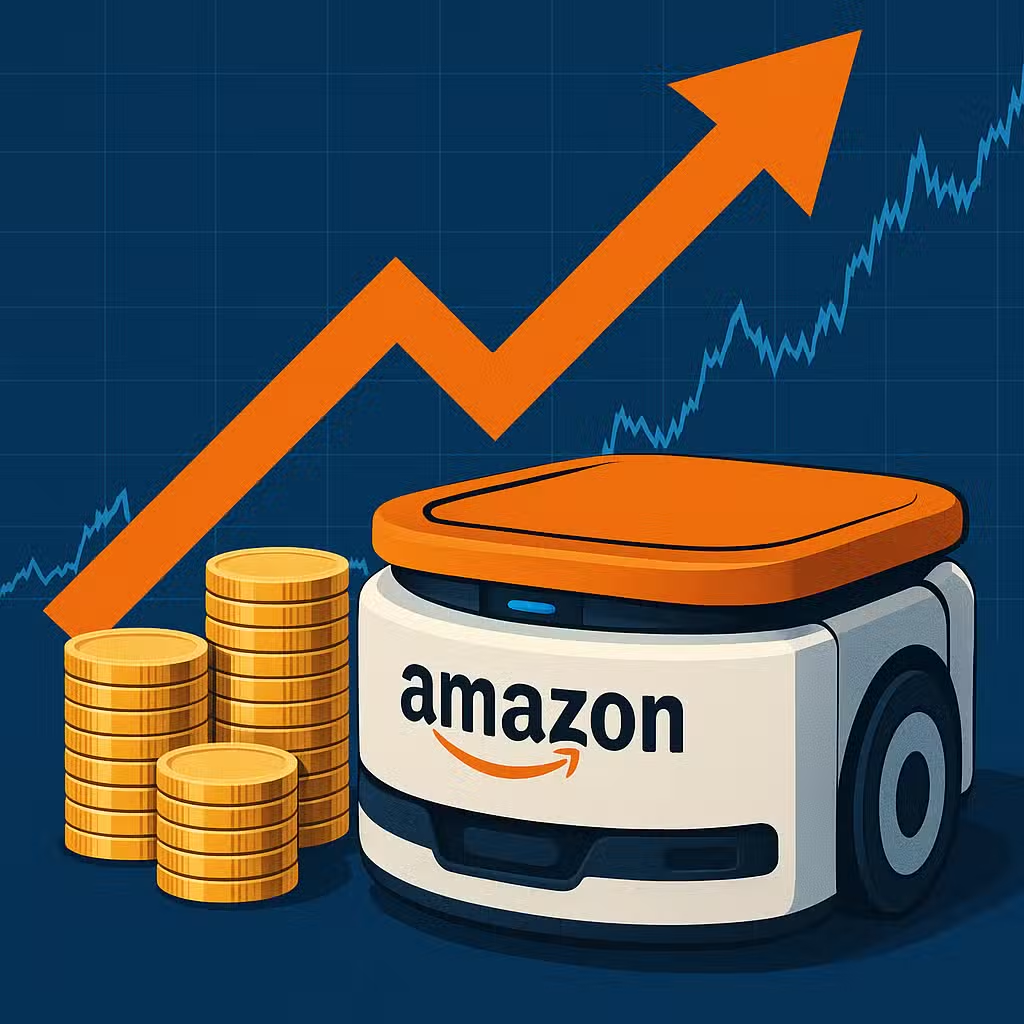Amazon’s Robot Adoption Projected to Boost Annual Profits by Up to $4 Billion for Investors
Imagine if your local grocery store started using robots to stock shelves instead of people. That’s like what Amazon is planning on a much bigger scale, and it could change how the company—and your investments—work.
What’s Happening at Amazon?
Amazon wants to use robots to do more of the work in its warehouses. According to recent reports, the company hopes to automate 75% of its operations and may replace about 600,000 jobs with robots in the coming years. By 2027, Amazon plans to have around 40 new high-tech robot warehouses, and it’s already updating old ones.
Why? Robots can help Amazon save a lot of money. Morgan Stanley, a big investment bank, says these changes could save Amazon between $2 billion and $4 billion every year by 2027. That’s a huge chunk of change that could make the company more profitable.
Why Investors Should Care
For investors, Amazon’s robot push matters for several reasons:
- Cost savings: Lower costs can mean higher profits, which often helps stock prices.
- Stock outlook: Some experts, like Morgan Stanley’s Brian Nowak, believe Amazon’s stock could go up by more than 35% if these changes work out.
- Sector trends: If Amazon’s robots work well, other companies might try the same thing, changing the whole retail and shipping industry.
But there are risks, too. Amazon’s stock hasn’t done as well as other big tech companies this year, partly because of lower-than-expected profits in the short term.
Bull Case: Why Robots Could Help Amazon
- Big savings: Robots could make shipping each order 20% to 40% cheaper. That means Amazon might save 60 cents to $1.20 every time it ships a package.
- Faster delivery: More robots could mean even quicker shipping for customers.
- More efficient warehouses: One of Amazon’s newest robot warehouses in Louisiana already cut costs by 25%.
- Less need to hire: By using robots, Amazon could avoid hiring over 160,000 new workers, saving even more money.
- Industry leadership: Amazon is already using more than 1 million robots, showing it’s ahead of the curve.
According to a Pew Research study, automation has already replaced about 1.7 million U.S. manufacturing jobs over the years, showing this trend isn’t new—but it is speeding up.
Bear Case: Why Robots Could Be a Risk
- Job losses: Replacing workers with robots could mean thousands of people lose their jobs, which might lead to bad press or political problems for Amazon.
- Big upfront costs: Building new robot warehouses isn’t cheap, and the savings may take years to show up.
- Uncertainty: Some experts think the savings might be less than Amazon hopes, especially if only 10%-20% of packages are handled by new robots by 2027.
- Tech problems: New robots might not always work as planned, which could slow down deliveries or cost even more money to fix.
What’s Next for Amazon?
Amazon just showed off a new robot system called ‘Blue Jay’ that can pick, store, and pack about 75% of the items in its warehouses. This shows Amazon is serious about using robots for more jobs.
But even with all this tech, experts say it’s important to watch if these robots really save as much money as promised—and if customers and workers are happy with the changes.
Investor Takeaway
- Watch Amazon’s earnings: Pay attention to future reports to see if cost savings from robots show up in profits.
- Balance the risks: Consider both the upside of cost savings and the downside of possible job cuts and tech hiccups.
- Look at the bigger picture: Automation isn’t just an Amazon story—think about how it could affect other companies in your portfolio.
- Stay informed: Follow updates on Amazon’s robotics progress and how the market reacts.
- Diversify: Don’t put all your eggs in one basket. Even if you’re bullish on Amazon, keep a mix of investments to manage risk.
For the full original report, see CNBC







